RNA-seq based transcriptomic map reveals new insights into mouse salivary gland development and maturation
- PMID: 27852218
- PMCID: PMC5112738
- DOI: 10.1186/s12864-016-3228-7
RNA-seq based transcriptomic map reveals new insights into mouse salivary gland development and maturation
Abstract
Background: Mouse models have served a valuable role in deciphering various facets of Salivary Gland (SG) biology, from normal developmental programs to diseased states. To facilitate such studies, gene expression profiling maps have been generated for various stages of SG organogenesis. However these prior studies fall short of capturing the transcriptional complexity due to the limited scope of gene-centric microarray-based technology. Compared to microarray, RNA-sequencing (RNA-seq) offers unbiased detection of novel transcripts, broader dynamic range and high specificity and sensitivity for detection of genes, transcripts, and differential gene expression. Although RNA-seq data, particularly under the auspices of the ENCODE project, have covered a large number of biological specimens, studies on the SG have been lacking.
Results: To better appreciate the wide spectrum of gene expression profiles, we isolated RNA from mouse submandibular salivary glands at different embryonic and adult stages. In parallel, we processed RNA-seq data for 24 organs and tissues obtained from the mouse ENCODE consortium and calculated the average gene expression values. To identify molecular players and pathways likely to be relevant for SG biology, we performed functional gene enrichment analysis, network construction and hierarchal clustering of the RNA-seq datasets obtained from different stages of SG development and maturation, and other mouse organs and tissues. Our bioinformatics-based data analysis not only reaffirmed known modulators of SG morphogenesis but revealed novel transcription factors and signaling pathways unique to mouse SG biology and function. Finally we demonstrated that the unique SG gene signature obtained from our mouse studies is also well conserved and can demarcate features of the human SG transcriptome that is different from other tissues.
Conclusions: Our RNA-seq based Atlas has revealed a high-resolution cartographic view of the dynamic transcriptomic landscape of the mouse SG at various stages. These RNA-seq datasets will complement pre-existing microarray based datasets, including the Salivary Gland Molecular Anatomy Project by offering a broader systems-biology based perspective rather than the classical gene-centric view. Ultimately such resources will be valuable in providing a useful toolkit to better understand how the diverse cell population of the SG are organized and controlled during development and differentiation.
Keywords: Development; Gene signature; RNA-sequencing; Salivary gland.
Figures
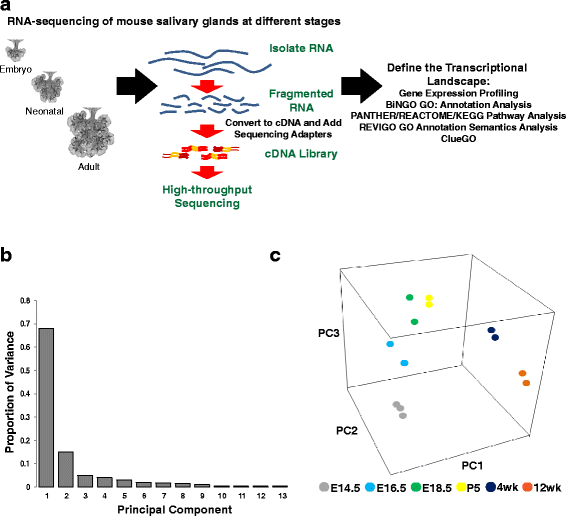
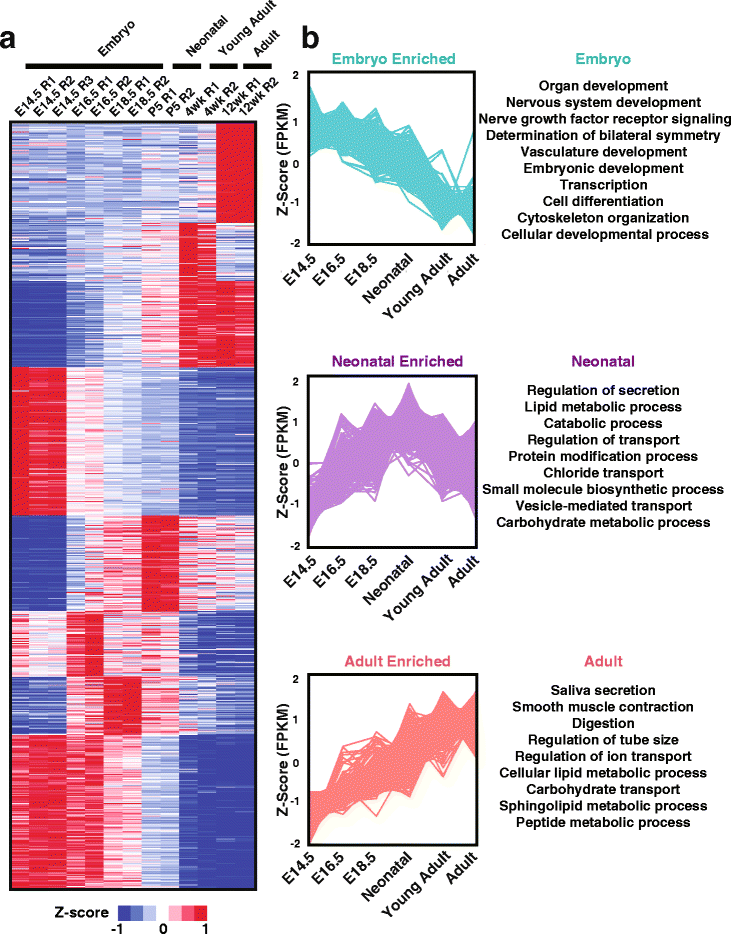
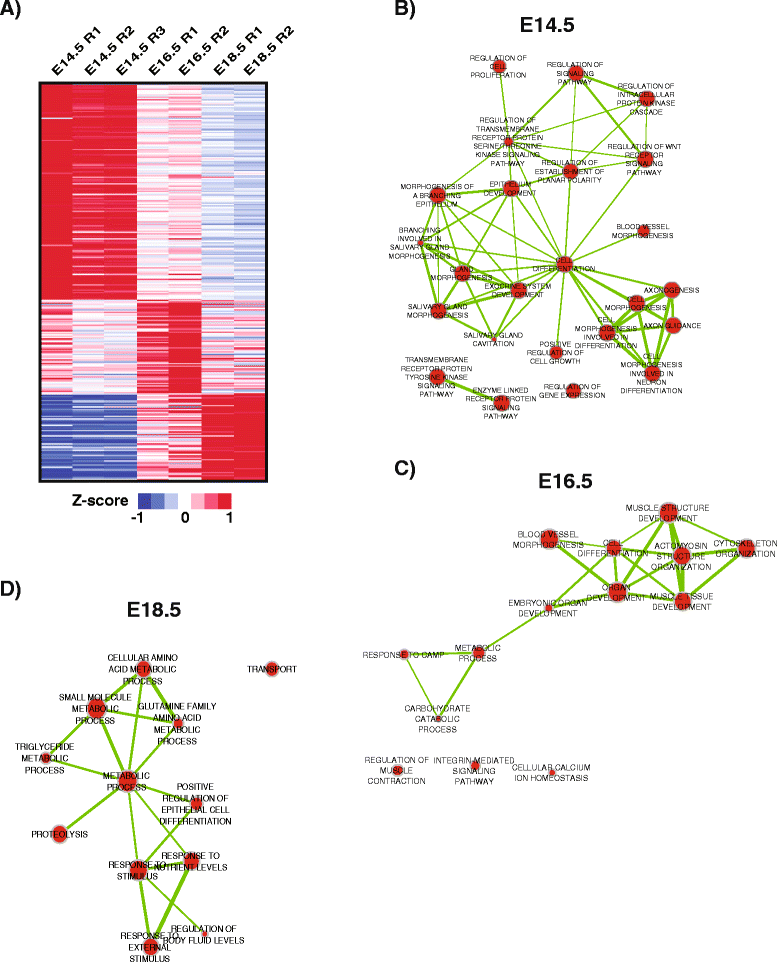
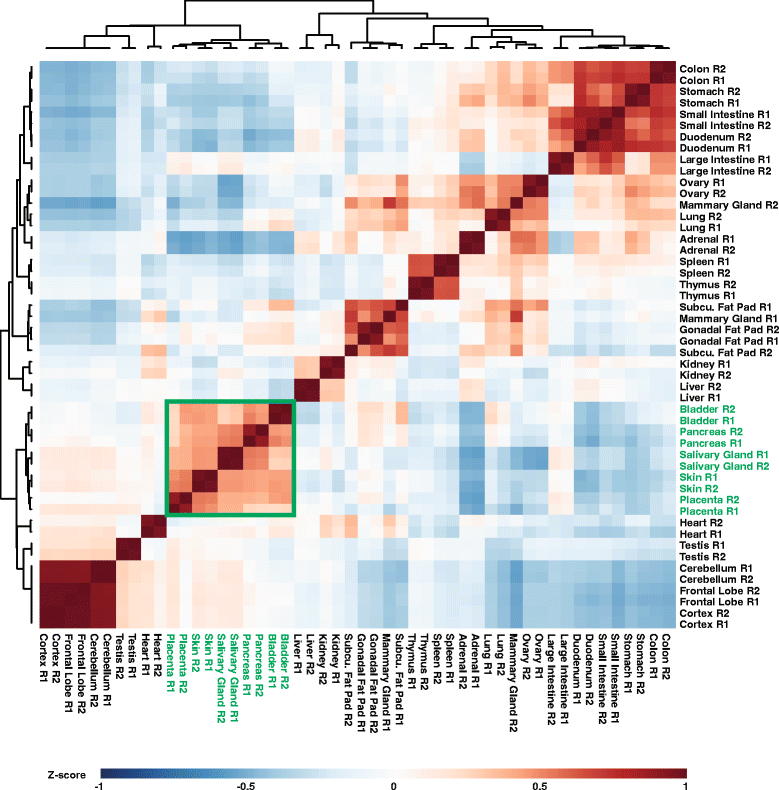
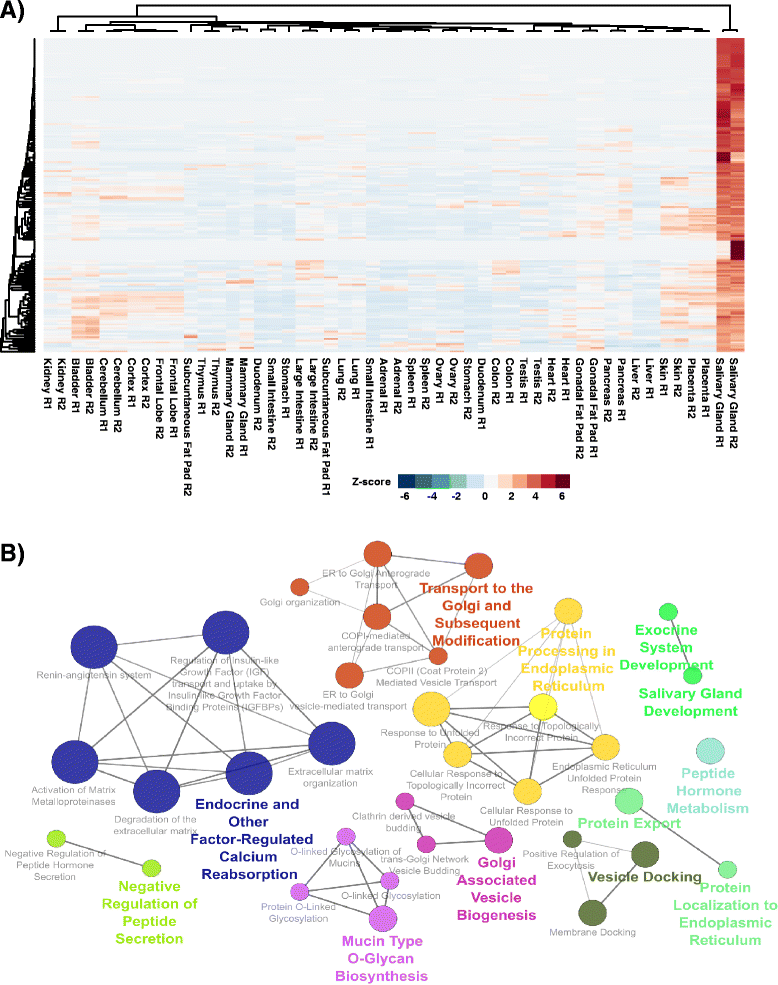
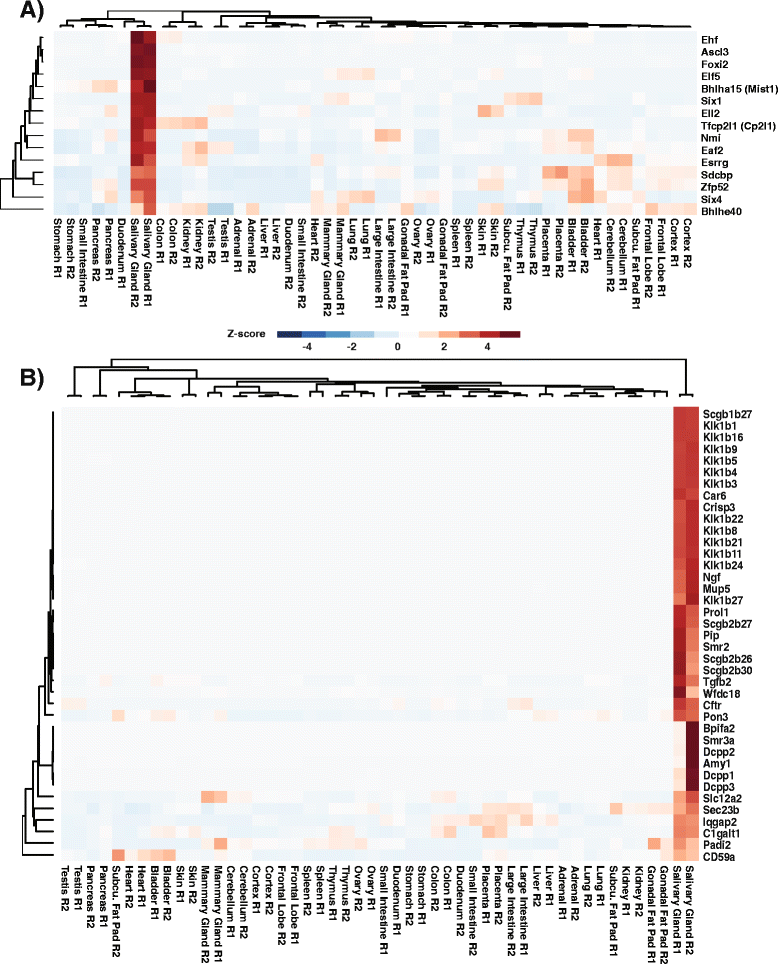
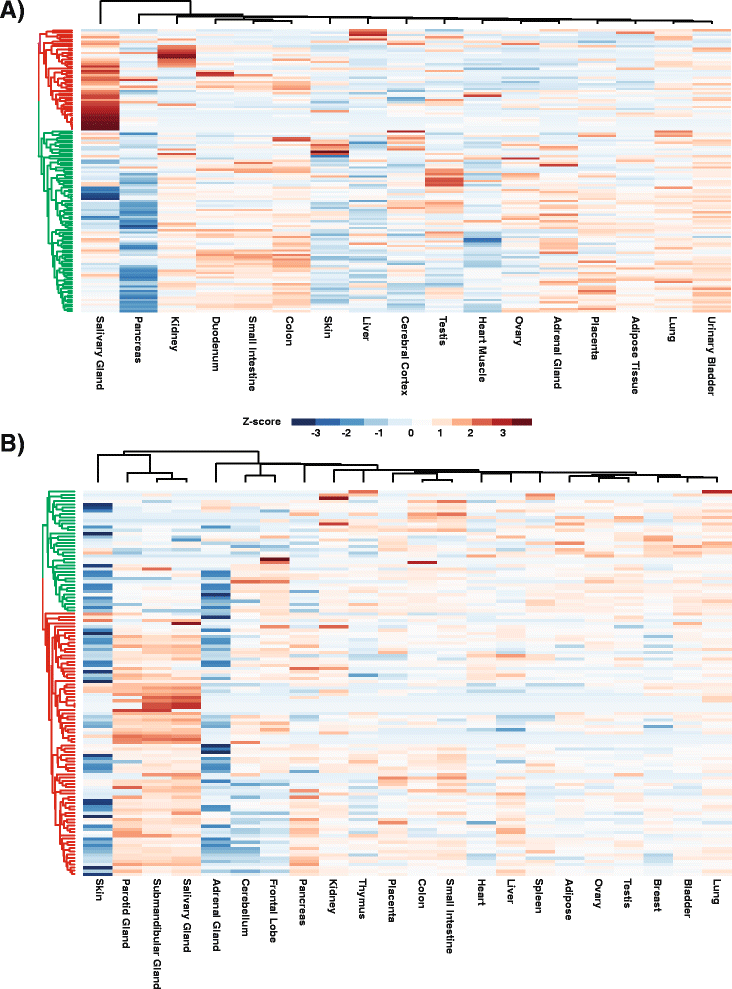
Similar articles
-
Single-Cell RNA-Seq and Histological Analysis Reveals Dynamic Lrig1 Expression During Salivary Gland Development.J Cell Physiol. 2025 Jan;240(1):e31487. doi: 10.1002/jcp.31487. Epub 2024 Nov 25. J Cell Physiol. 2025. PMID: 39587709
-
Tsetse fly tolerance to T. brucei infection: transcriptome analysis of trypanosome-associated changes in the tsetse fly salivary gland.BMC Genomics. 2016 Nov 25;17(1):971. doi: 10.1186/s12864-016-3283-0. BMC Genomics. 2016. PMID: 27884110 Free PMC article.
-
Express: A database of transcriptome profiles encompassing known and novel transcripts across multiple development stages in eye tissues.Exp Eye Res. 2018 Mar;168:57-68. doi: 10.1016/j.exer.2018.01.009. Epub 2018 Jan 11. Exp Eye Res. 2018. PMID: 29337142 Free PMC article.
-
Systems analysis of salivary gland development and disease.Wiley Interdiscip Rev Syst Biol Med. 2010 Nov-Dec;2(6):670-82. doi: 10.1002/wsbm.94. Wiley Interdiscip Rev Syst Biol Med. 2010. PMID: 20890964 Free PMC article. Review.
-
Characterizing and annotating the genome using RNA-seq data.Sci China Life Sci. 2017 Feb;60(2):116-125. doi: 10.1007/s11427-015-0349-4. Epub 2016 Jun 13. Sci China Life Sci. 2017. PMID: 27294835 Review.
Cited by
-
Comparative analysis of the transcriptomes of EDL, psoas, and soleus muscles from mice.BMC Genomics. 2020 Nov 19;21(1):808. doi: 10.1186/s12864-020-07225-2. BMC Genomics. 2020. PMID: 33213377 Free PMC article.
-
A Global Vista of the Epigenomic State of the Mouse Submandibular Gland.J Dent Res. 2021 Dec;100(13):1492-1500. doi: 10.1177/00220345211012000. Epub 2021 May 12. J Dent Res. 2021. PMID: 33978512 Free PMC article.
-
Intragland Shh gene delivery mitigated irradiation-induced hyposalivation in a miniature pig model.Theranostics. 2018 Jul 30;8(16):4321-4331. doi: 10.7150/thno.26509. eCollection 2018. Theranostics. 2018. PMID: 30214623 Free PMC article.
-
Transcriptional profiling reveals gland-specific differential expression in the three major salivary glands of the adult mouse.Physiol Genomics. 2018 Apr 1;50(4):263-271. doi: 10.1152/physiolgenomics.00124.2017. Epub 2018 Jan 26. Physiol Genomics. 2018. PMID: 29373073 Free PMC article.
-
Genetic Study of Elf5 and Ehf in the Mouse Salivary Gland.J Dent Res. 2023 Mar;102(3):340-348. doi: 10.1177/00220345221130258. Epub 2022 Nov 8. J Dent Res. 2023. PMID: 36348499 Free PMC article.
References
-
- Nelson DA, Manhardt C, Kamath V, Sui Y, Santamaria-Pang A, Can A, Bello M, Corwin A, Dinn SR, Lazare M, et al. Quantitative single cell analysis of cell population dynamics during submandibular salivary gland development and differentiation. Biol Open. 2013;2(5):439–47. doi: 10.1242/bio.20134309. - DOI - PMC - PubMed
Publication types
MeSH terms
Substances
Grants and funding
LinkOut - more resources
Full Text Sources
Other Literature Sources
Molecular Biology Databases

